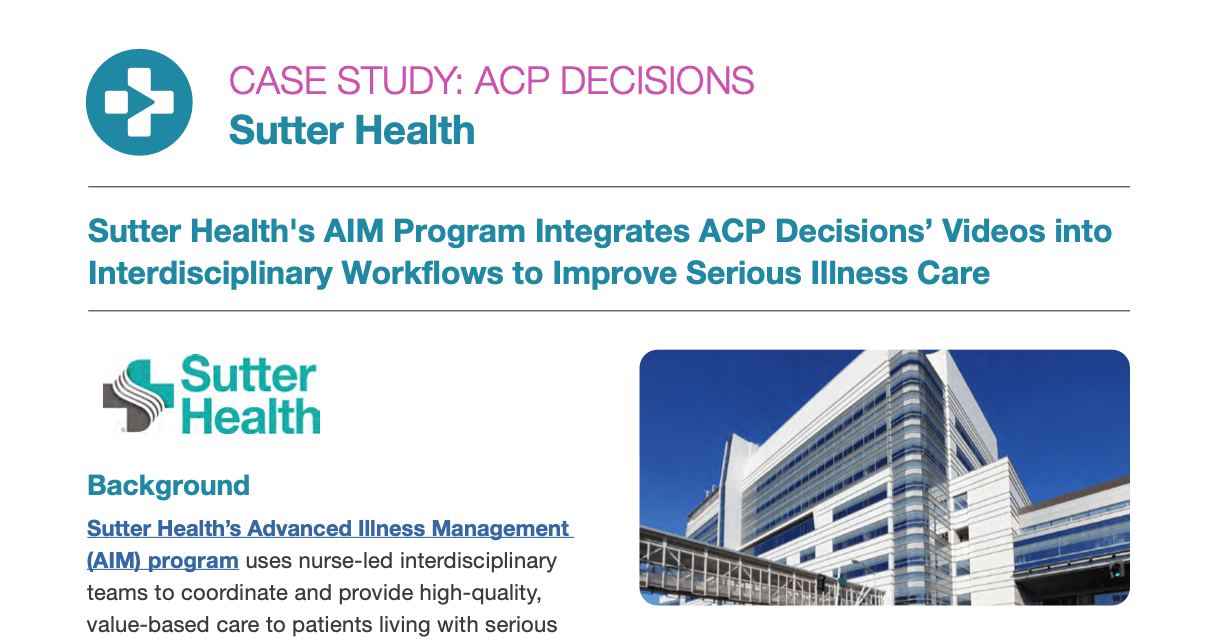IMPLEMENTATION | September 30, 2019
5 Tools to Maximize the Effectiveness of Your PDSA Cycles
Reading Time: 3 minutes


Plan-Do-Study-Act (PDSA) is a quality improvement method that healthcare teams use to quickly and efficiently test new interventions. This concept involves structured, iterative tests of change. The simplicity of this experimental learning method means that it can be applied to many different situations.
While PDSA is easy to follow, it is not meant to be a “one and done” process. In fact oversimplifying the application of PDSA can end up with no effective change or learning at all. A successful PDSA process involves multiple cycles, with adjustments being made along the way. The goal is to increase the chances of delivering and sustaining desired improvement. Unlike controlled trials, PDSAs are action-oriented, enabling new learning to be incorporated into the process.

Review of the PDSA steps:
- Plan: Plan the test and determine how to collect data. This step should include stating the objective, setting goals and metrics, making outcome predictions, and answering the “who, what, when and where” of the change.
- Do: Execute the plan and document any issues and unexpected observations.
- Study: Analyze the data, study the results, compare outcomes to your predictions, and summarize learning.
- Act: Determine what modifications should be made and what aspects should be adopted moving forward. Prepare plan for the next cycle.
Tools to Help Your Team Get the Most from PDSA

A key strategy for using the PDSA approach effectively is to first clearly define “why” the change is needed and “what” you are trying to accomplish. Then, develop small tests of incremental change so that each PDSA cycle is meaningful and manageable. Here are five tools that can be incorporated into each step of a PDSA cycle to maximize its effectiveness:
- Use a PDSA cycle template to serve as an overall roadmap for the team and to track progress throughout the test.
- Develop SMART objectives during the Plan phase to help your team stay focused and ensure goals are meaningful. The acronym stands for Specific, Measurable, Achievable, Realistic, and Time-specific. This tool will establish the metrics to be tracked and will help define outcomes.
- Follow the SBAR technique for communicating during the Do phase. This method of sharing the situation, background, assessment (or metrics) and recommendation (planned change) can be very valuable for organizing ideas and thoughts, promoting educational awareness, and ensuring appropriate buy-in and follow-through of the change.
- Display data in a run chart or control chart in the Study phase. Displaying collected data in an easy-to-decipher visual form that can be shared with the team will facilitate the determination of whether or not changes are effective and which ones are having the most impact.
- Create a Data Wall or Dashboard to use as a basis for the Act stage. Providing stakeholders with an overview of what progress is being made with the initiative will promote transparency, accountability, ownership, and positive reinforcement.
While the PDSA method offers a straightforward approach to testing proposed interventions, it’s important to remember that it is not a shortcut to initiating change. With the right planning and tools, your team can use PDSA cycles to find opportunities to improve existing processes, facilitate implementation of changes, and create sustainable improvement.
Implementing a new advance care planning initiative or interested in improving the advanced care planning process at your organization? ACP Decisions can help. Contact us today to learn more!
You might also like...

Sutter Health’s AIM Program Integrates ACP...
CASE STUDIES, IMPLEMENTATION | < 1 MIN READ


